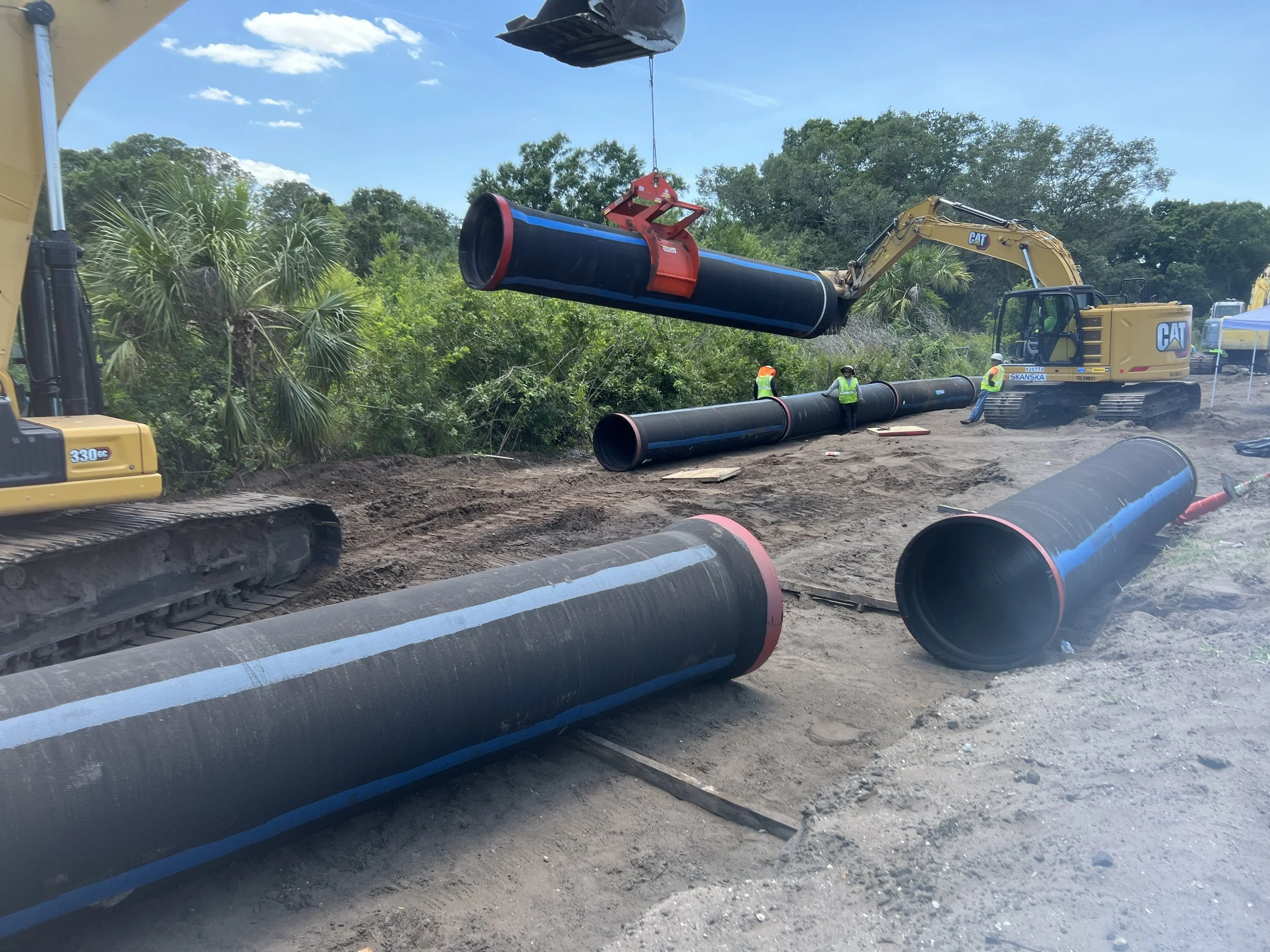Unsung Heroes: Understanding the Crucial Role of Construction and Engineering Inspection
In the world of public works construction, where intricate bridges, robust roadways, and large-scale water/wastewater infrastructure shape our landscape, a group of professionals work diligently behind the scenes – Construction Engineering and Inspection (CEI) experts. Often, unsung heroes, these professionals play a pivotal role in ensuring that quality construction projects are delivered safely to the public and client on time, within budget, and compliant with associated regulations and construction standards. This blog post highlights the often overlooked but indispensable world of Construction Engineering and Inspection.
Construction Engineering and Inspection (CEI) is a crucial element of the construction phase of a project, most notably on large, complex public works projects. CEI involves providing engineering oversight and inspection to safeguard the quality of construction and its compliance with design specifications, codes, and regulations. Hence, CEI firms are typically retained by the project owner or their designated representative, such as the construction management firm. Critical aspects of CEI are discussed below.
Compliance and Quality Assurance/Quality Control
With CEI, project owners will know that construction complies with specified procedures, requirements, and materials. The CEI firm monitors contractor activities, interprets construction drawings and specifications, and prepares daily reports to document compliance. They also ensure that the construction activities adhere to local building codes, regulations, and safety standards. This includes environmental regulations and other relevant guidelines specific to the type of public works contract.
CEI professionals perform a critical role in maintaining construction quality. This involves inspecting materials, workmanship, and construction processes to identify and correct any deficiencies. Usually, the CEI firm is actively engaged in change order reviews, preparing inspection punch lists, and monitoring construction progress.
Document Management and Record-Keeping
Document management and record-keeping are integral aspects of CEI that contribute to the organization, transparency, and accountability of construction projects. The CEI firm is typically responsible for maintaining detailed and accurate records throughout the construction process, documenting each phase and any changes or deviations from the original plans. Effective document management ensures that up-to-date information is available to all stakeholders, facilitates regulatory compliance, and provides a historical record of the project’s development.
The document management process includes:
Distributing and revising construction drawings and specifications.
Reviewing shop drawings and Requests for Information.
Recording inspection findings, test results, and corrective actions.
Tracking of change orders and obtaining approvals.
Maintaining records of all permits, approvals, and regulatory correspondence.
Documenting all project-related communications, including meeting minutes, emails, and other correspondence.
Preparing closeout documentation such as as-built drawings, O&M manuals, asset data, and equipment warranties.
Field Testing and Materials Sampling
Often, CEI includes field testing and sampling to verify the quality of materials used in construction and compliance with project specifications. If not directly performing the testing, CEI professionals may coordinate with testing laboratories and oversee the specialized testing used in construction, such as soils, concrete, steel, and asphalt. CEI's responsibilities include documenting the test methods, results, and any approved deviations from the project specifications. Verifying that materials meet the required specifications is critical for the structural integrity and durability of the finished project.
Overall Coordination with Stakeholders
The CEI firm works closely with various stakeholders, including project managers, architects, design engineers, contractors, and regulatory authorities. CEI professionals monitor construction progress and identify any delays or issues that may arise. Effective communication is critical to addressing issues, resolving conflicts, and keeping the project on schedule and within budget. CEI professionals serve as a bridge between the various project stakeholders, thereby facilitating the smooth execution of construction projects from planning through completion.
Field-based Problem Solving
When unexpected issues arise during construction, CEI professionals use their engineering knowledge to analyze problems and propose effective solutions that meet the project’s safety and quality standards. Problem-solving requires a combination of technical expertise, practical experience, and effective communication skills. Common issues that may require problem-solving by the CEI professionals include design discrepancies, unforeseen site conditions, material quality issues, construction delays, safety concerns, contractual disputes, budget overruns, or community concerns. Effective problem-solving in the CEI field requires collaboration, attention to detail, and applying engineering knowledge to find practical and feasible solutions in each possible scenario.
Individuals working in the CEI field typically have a background in civil engineering or related fields. Government agencies, private consulting firms, or construction companies may employ them. They are essential in ensuring that construction projects are completed safely, efficiently, and per specified standards and regulations.
V&A/MWI provided CE&I services during the installation of a 36-inch pressure sustaining control valve.
If you have follow-up questions and want to know more about the benefits of hiring a CEI firm, please get in touch with us at the link below. Our Florida-based team is well-versed in providing Construction Engineering and Inspection services on large-scale and complex water, wastewater, and reclaimed infrastructure projects. We can put you in contact with some of our clients who will attest to the benefits of hiring a CEI firm, such as V&A/MWI.


